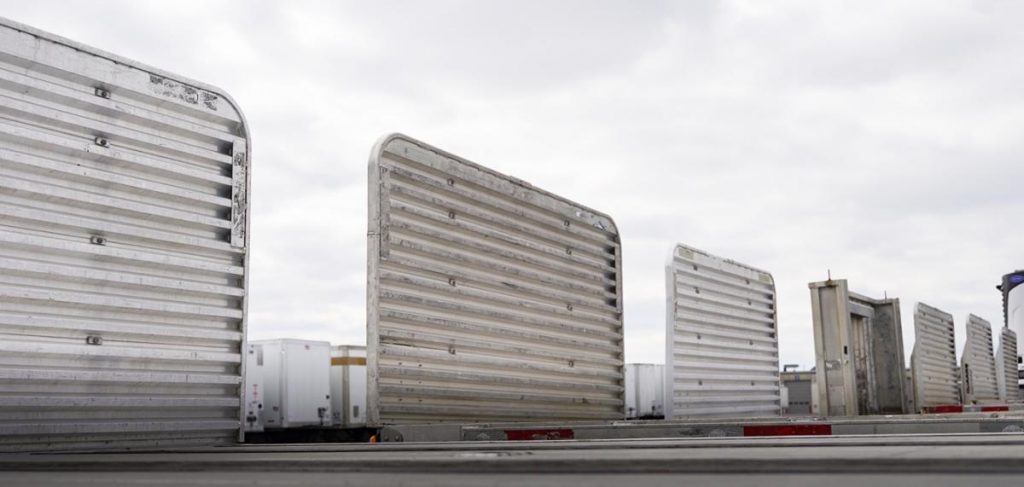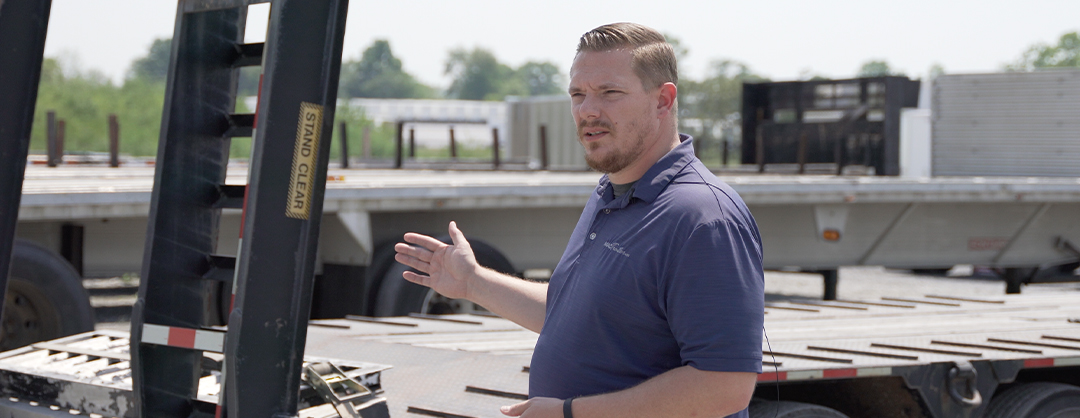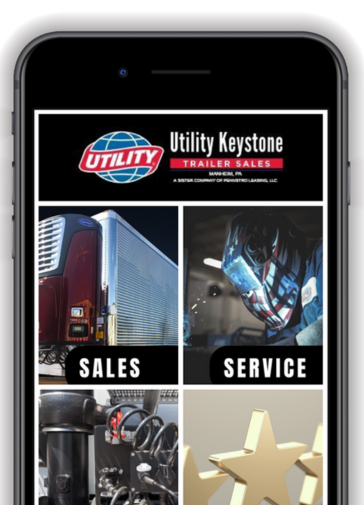Welcome to our video series on How to Buy the Best Flatbed
Welcome to our video series on How to Buy the Best Flatbed. Today we’re discussing flatbed bulkheads and accessories. Some of the topics we’ll cover are:
Read more about “How to Buy the Best Flatbed Trailer.”
- What is a bulkhead on a flatbed?
- Flatbed bulkheads, which is best?
- What is a dunnage rack?
- The purpose of a lift axle
- What are my options for spec’ing a flatbed trailer?
Bulkheads

What is a bulkhead on a flatbed?
Flatbed bulkheads are important to cargo control. A bulkhead is affixed to the front end of a flatbed trailer to prevent forward movement of cargo and protect the driver carrying heavy loads.
What type of bulkhead is best for my flatbed?
There are two basic types of flatbed bulkheads, the wrap around and the flat.
Choosing the right bulkhead is important for the safety of both the driver and the cargo. In addition, you want something durable enough to stand up to shifting load while not adding weight to your trailer.
Flat Bulkheads:
A flat bulkhead is sufficient if you won’t be loading cargo that requires additional reinforcement on the sides.
With the flat bulkhead, you’re not sacrificing any deck space, allowing pallets to be loaded up against the bulkhead.
Flat bulkheads are available in both corrugated or flat metal.
Wrap Around Bulkheads:
A wrap around bulkhead, or turnback bulkhead, has a return on either side which can provide extra support to help keep a load in place, and the turnback makes it easier to secure the load with side rail kits and panels.
Wrap arounds are available with returns of 10″ or up to 24″ in length.
Both bulkheads come DOT or Non-DOT rated.
Accessories
Toolboxes:
Many configurations are available depending on your needs, including bolt-on kits, steerable lift axles, and front and rear configurations.
They can be mounted between the spread axle or anywhere along the flatbed on either side.
Dunnage Racks:

What is a Dunnage Rack?
Dunnage Racks provide storage on your semi-trailer flatbeds for the wood (or dunnage) while transporting unpalletized loads.
They’re mainly used on flatbed, drop-deck, and gooseneck trailers to free up space on your trailer bed to allow you to carry more cargo.
Dunnage racks come in many styles and configurations, including baskets styles with or without a floor, side mounts, cross trailer mounts, and can be designed to hold dunnage as needed.
Talk with your semi-trailer dealer near you to help with spec’ing a dunnage rack that works best for your needs.
Lift Axles:

What is the purpose of a Lift Axle?
A lift axle is a way to lift the tires off the road surface when they are not required to support a load, improving the efficiency of the trailer operation.
Lift axles are a great option that can save you money on tolls on your return trip with one less axle on the ground and reduce rolling resistance on the empty trailer.
A lift axle makes pivoting easier when turning and creates less tire scrub when pivoting on just one axle.
Lift axles can be placed on both front and rear.
Bolt-on kits provide about 2”-4″ of lift. Some stand-alone lift axles will get you a little more clearance
Benefits include:
- Easier to pivot when turning
- Less tire scrub
- Saves money on tolls and fuel
- It can be retrofitted onto any axle
Add a lift axle switch in the cab.
In addition to the ball valve typically used to lift the axle, we recommend running an electrical lift axle through the 7-way or auxiliary plug to a switch in your cab, eliminating your driver’s need to leave the truck.
Many configurations are available depending on your needs, including bolt-on kits, steerable lift axles, and front and rear configurations.
Rear Axle Dumps
The advantages of a rear axle dump are similar to that of a lift axle, allowing you to pivot easier when making turns at your delivery or loading location.
Rear axle dumps are typically electrically operated and can be run through a standard 7-way plug; however, we recommend the auxiliary plug on the front to operate multiple switches.
Talk with the flatbed semi-trailer dealer near you to help with your lift axle and rear axle dumps.
Additional Accessories
On the front end, when spec’ing your flatbed trailer, there are many extras and customizations we can add to meet the needs of your business and keep your drivers safe. Some examples are:
- Additional lights
- Strobe lights
- Backup lights
- Wide-load lights
- Filled in rear
- Custom fenders
- Additional steps
- Shortened bumper
- And much more
Be sure to contact your semi-trailer dealer to spec your next flatbed.
Utility Keystone works hard at finding the best solution to meet the demands of your hauling requirements.
If you’d like more information on beavertail ramps, Moffett kits, or choosing the best flatbed trailer to fit your particular needs and application, give us a call or click the link below.
Read more in this series, How to Buy the Best Flatbed Trailer.
- How to Buy the Best Flatbed Trailer
- 3 Types of Semi-Trailer Flatbeds
- Conestoga vs. Curtainside Trailer
- 7 Ways to Maximize Payload on a Flatbed
- Beam Ratings on a Flatbed Semi-Trailer
- 5 Ways to Prevent Damage to Your Flatbed
- Load Securement Options for Flatbed Semi-Trailers
- Hauling Equipment on Step Decks and Flatbeds
- Bulkheads and Accessories for Flatbeds
Read Articles on How to Buy the Best Dry Beds
Conestoga vs Curtainside Semi-Trailer
Curtain Side and a Conestoga Trailers are great options to keep your cargo protected from harsh elements, and both are an easier, safer way of tarping your load
Everything There is to Know Before Buying Your Next Flatbed Trailer
Everything You Need to Know Before You Buy Your Next Reefer Trailer. We’ll take a deep dive into how you can buy the best reefer trailer spec’d with your particular requirements and needs in mind.
How to Haul Equipment on Step Decks and Semi-Trailer Flatbeds
Hauling Equipment on Step Decks and Flatbed Trailers. Beaver tail, ramps, and Moffett kits.







